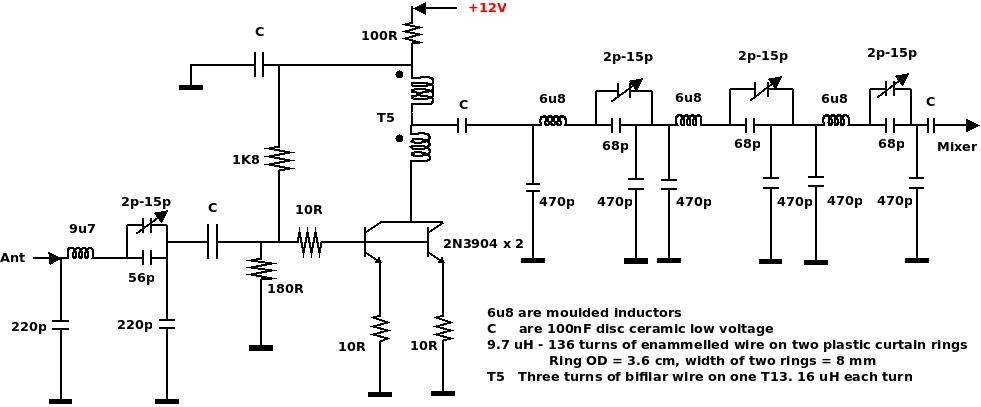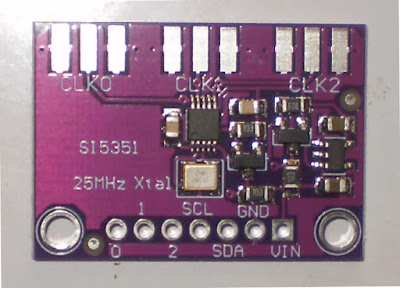Direct Conversion Receiver using sub-harmonic mixer
Used this sub-harmonic mixer, popularised by Vladimir Polyakov (RA3AAE), to make a 40M direct conversion receiver.
 |
| Sub-harmonic mixer |
Example: Local oscillator is set to 3572.5 kHz to receive 7145 kHz in this sub-harmonic mixer.
LO leakage to antenna causes most problems in direct conversion receivers. Anticipated little
problem because LO and Rx frequencies are different in a sub-harmonic mixer.
Tried a single tuned front end without RF amplifier, DDS VFO as LO, a simple 12 Volt power
supply and audio amplifier. Audio amplifier was followed by a LM386 speaker amplifier.
Result was an unusable radio with strong hum. 2nd harmonic of LO was reaching the antenna
or the power supply had ripple ?
Assumed both and applied Grandma-approved home remedies.
- RFC with ferrite core, bypassed with 100nF ceramic disc capacitor, in every conceivable point
- 10000uF capacitor after rectifiers of power supply
- 18 Volt from first regulator, goes to radio box through RF filter
- 18 volt is input to a an active ripple filter via another RF filter
- Input to 12 Volt regulator goes from ripple filter
- LO passes through LPF with a trap at 7MHz
- RF amplifier,sub-harmonic mixer,LO buffer,AF amplifier,active ripple filter,and 12 Volt regulator are put inside an aluminium box ( locally sold as cash box ). LM386 speaker amplifier was kept outside the box.
- Noise filter on 230 VAC power line
- 10nF ceramic capacitors were put across each rectifier and secondary windingof power transformer.
Almost all circuits came from EMRFD. Made little modifications to meet local needs.
Circuit of DCRX
POLO mint-sized ferrite cores are available locally, called T13 by component retailers. No specifications are available. T13 are cheap and good as RFC core.
Resistance between opposite sides of T13 varies fron 2K5 to 60K 😞.
Can be harvested from dead CFL.
T13 were used instead of FT-37-43 ( don't have any)
Speaker amplifier:
40M rf amplifier was made on a separate board.
Circuit of the 40M rf amplifier..
Power supply schematic:
 |
| Power line filter |
 |
The receiver was picking up some FT8 and local LSB SSB signals.
There were no hum and whistles but it was noisy.
Two short recorded (20th Aug 2021) QSO can be downloaded/played.
Filenames indicate LO in kHz.
Going to add a low pass filter to cut some noise.
73 Basanta, VU2NIL
3rd Oct. 2019
Rummaged through junk boxes and stock of components for capacitors and inductors to make a filter. Failed to find suitable inductors.
At this point developed an itch to make the low pass filter with Digital Signal Processing. But my knowledge of DSP is zero. Looked around and found gnuradio-companion.
One can create GNU Radio flow graphs with this; the end result may not be as expected 😀
Thank you GNU Radio Team.
Looked around some more, found excellent tutorials. However most of what they explained
was way above my head.
Went ahead anyway to make my filter and created a few flow graphs, without a clue of what is taking place under the hood. Kept one flow graphs out of these; vb.grc.












Thanks for this information
ReplyDeleteDipak (vu3okt)